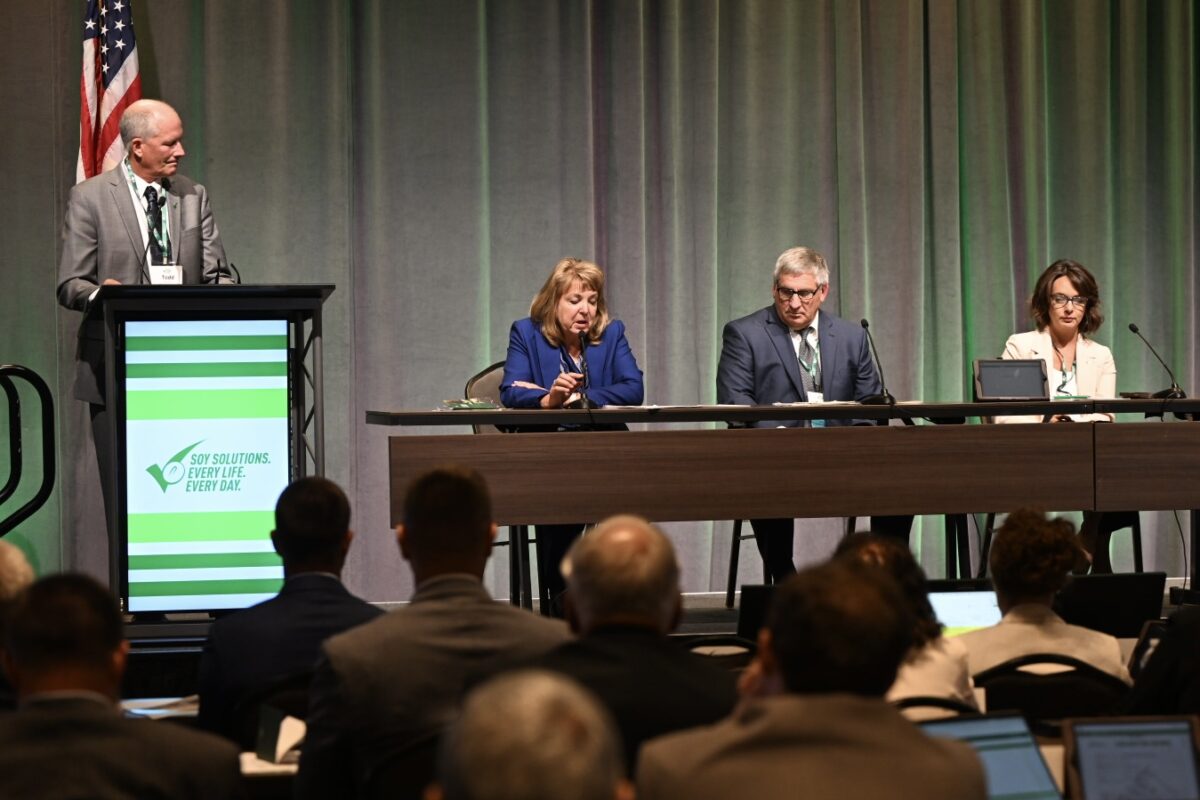Take Flight with U.S. Soy

Millions of bushels of soybeans could soon be used to power the jets that take us across the country and around the world. Sustainable aviation fuel (SAF), a clean substitute for the fossil fuels traditionally used for aviation, is poised to create new demand for soybeans and other feedstocks.
SAF is a fuel made from various feedstocks, including soybeans, cooking oil, waste oils from animals and municipal solid waste from homes and businesses. Other potential sources include forestry waste and fast-growing plants like algae.
“There are seven different pathways to make a renewable jet fuel or SAF today,” says Scott Fenwick, a chemist and technical director with the National Biodiesel Board. “Far and away, the most common that probably accounts for over 95 percent of all the SAF in the marketplace is fats and oils.”
NBB is the U.S. trade association representing the entire biodiesel and renewable diesel value chain, including producers, feedstock suppliers and fuel distributors. The soy checkoff works closely with the association to fund research and promotion to help keep U.S. soybeans a top feedstock supplier for sustainable fuel.
SAF, just one of the sustainable fuels made from renewable biomass and waste resources, can deliver the same performance as petroleum-based jet fuel but with a fraction of its carbon footprint, giving airlines the ability to significantly reduce emissions, according to the Department of Energy.
“This is an unfolding and very dynamic market disruption,” Mac Marshall, vice president of market intelligence for the soy checkoff and the U.S. Soybean Export Council, says. “I think it is a positive disruption. The real excitement is when you start to see the investments come in with announcements from corporate and end-users.”
United Airlines, Southwest Airlines and other global aviation companies have already announced they will use SAF in their fleets. In September, United revealed it would purchase 1.5 billion gallons of SAF.
“We are seeing more and more airlines make commitments,” Marshall says. “Seeing that pull from the demand side is very exciting for this paradigm shift in the fuel industry.”
The Environmental Protection Agency estimates that 9% to 12% of the U.S. transportation greenhouse gas emissions are from aviation.
“SAF biofuel gives an impressive reduction of up to 80% in carbon emissions over the lifecycle of the fuel compared to traditional jet fuel it replaces, depending on the sustainable feedstock used, production method and the supply chain to the airport,” says Andreea Moyes, Air British Petroleum’s global aviation sustainability director, in a recent interview published by the company.
According to the Department of Energy, an estimated 1 billion dry tons of biomass can be sustainably collected each year in the United States, enough to produce 50 billion to 60 billion gallons of low-carbon biofuels.
Currently, U.S. biomass-based diesel markets for biodiesel and renewable diesel are at 3 billion gallons per year and some estimates have placed the domestic aviation fuel market at 26 billion gallons per year, according to the Department of Energy.
“There is not enough vegetable oil output in North America to meet the aviation demand if that were to be used at its full potential,” John Jansen, vice president of strategic partnerships for the soy checkoff, says. “The numbers are pretty staggering, so we will have to develop that corn/soy rotation balance as time goes on. I think soy will need to become a larger percentage of the rotation. How large is yet to be determined.”
“Demand equals growth, equals value for our farmers,” Jansen continues. “This is a high demand area and one that the checkoff will participate in and hopefully participation leads to enhanced revenues for our farmers.”
SAF and biofuels are increasing the demand for soybeans grown by U.S. farmers, allowing farmers to reduce carbon while increasing profitability.
“If you go back 100 years and look at all of the advancements in farming and agricultural practices, I honestly believe this could be the biggest opportunity in the lifetime of today’s farmers,” Fenwick says. “Today farmers have the ability to help decarbonize the fuel industry, provide domestic energy security, provide additional domestic jobs and low carbon fuels to help with climate change. There’s more opportunity there today for farmers than there probably will be with any other change in their lifetime.”



